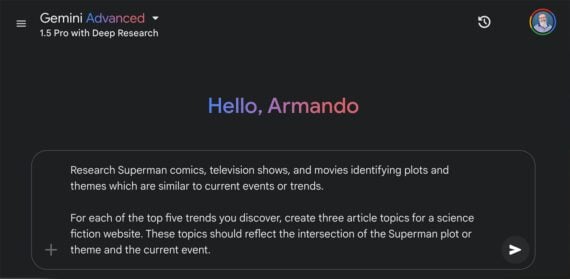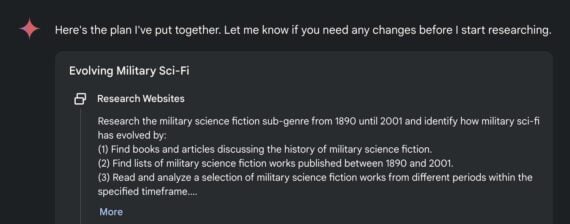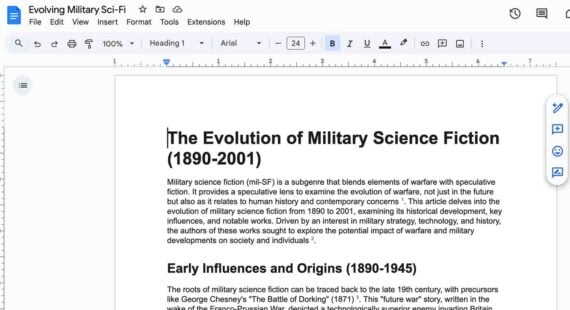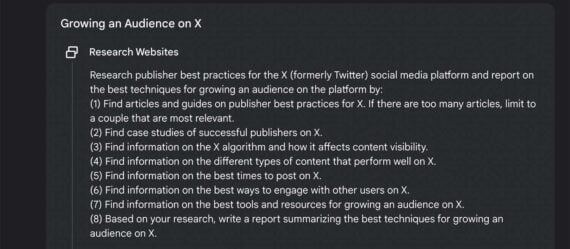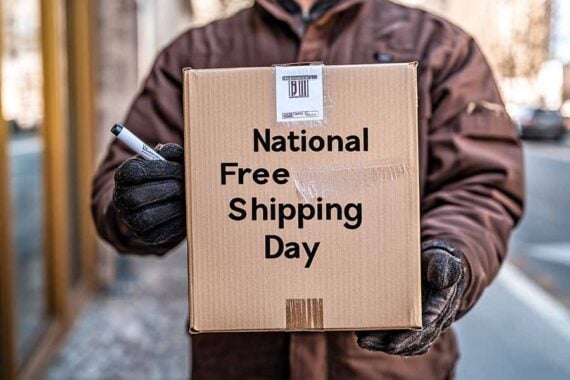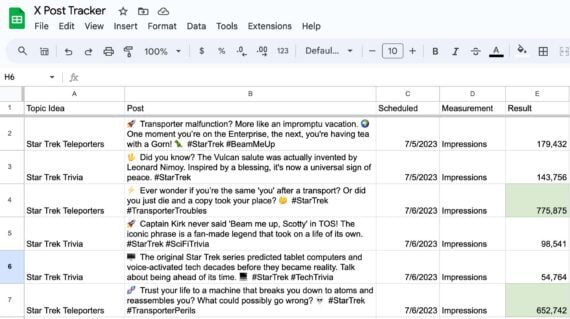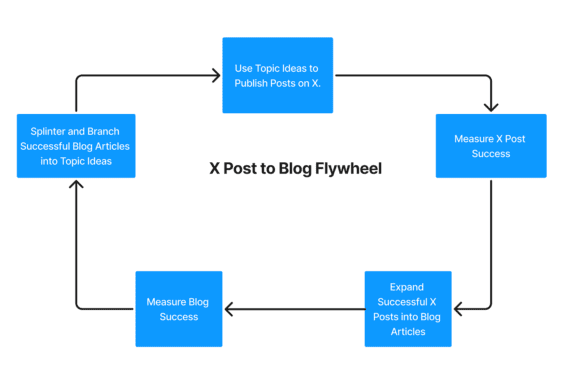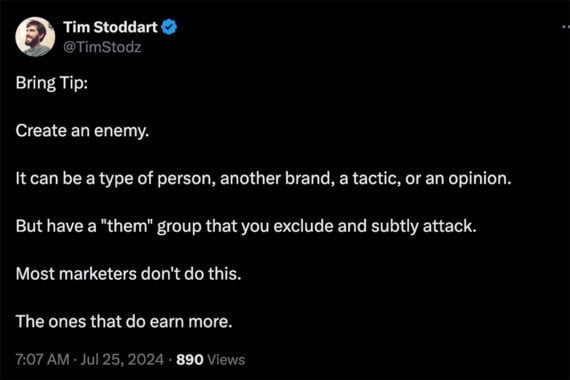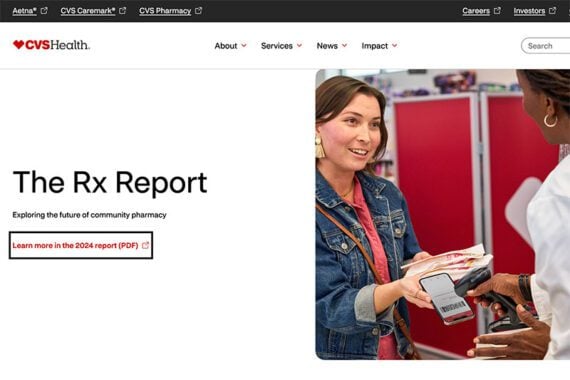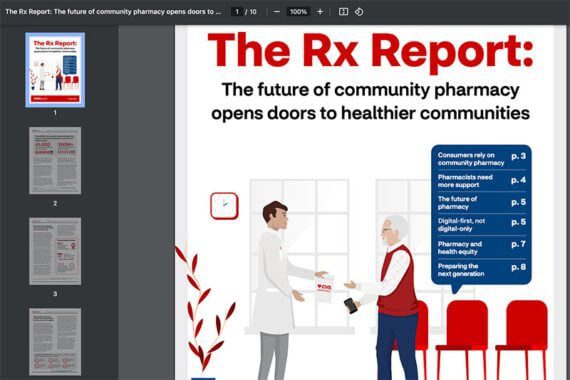How Marketers Can Adapt To Drive Quality Over Quantity via @sejournal, @hethr_campbell
If you want more quality in your pipeline, you need more quality in your marketing efforts.
That means you should focus more on your ideal customer profile (ICP) and their journey to conversion.
Reflecting on the year, I can tell you that these are some of the most impactful places to spend time and resources to support a more quality-driven pipeline.
I just saw a post in my social feed that could not have been more timely:
Content is your round-the-clock salesperson.
It can reach more people in one day that you’ll meet in a lifetime.
The content that you’re putting out there is dictating the type of lead you’re going to get from that content.
So, when you’re looking at your pipeline, what do you see?
I hear it from organizations all the time. They want leads in their pipeline who are most likely to convert (i.e., high quality).
And I also see the efforts they’re putting in, and there’s so much opportunity they’re missing.
The bottom line: If you’re looking for higher quality in your pipeline, you need higher quality in your marketing efforts.
To inject more quality into your marketing efforts, you need to build a content strategy based on what your ideal customer wants and needs to solve their pain.
So, step back and audit: What is your round-the-clock salesperson selling for your business? Is it attracting the right leads?
Quality can no longer be an afterthought for your marketing team, and the executive team needs to get on board, too.
The stuff in this article isn’t new. But sometimes, we need reminders of the foundations.
My hope is that it gives you at least one ah-ha moment to help you be more intentional – and successful – with your lead generation efforts.
How To Shift To Quality-Driving Marketing Strategies
I’ve had the pleasure of moderating half our 45 webinars this year with some great experts!
There are some resounding themes that surface across them all. The importance of quality, branding, consistency, and holistic strategies came to the top of the list.
And have you noticed all the branding articles in your LinkedIn feed, or is it just my algo? Psst … it’s because it’s important…
With leaner teams, leaner budgets, and leaner attention span (and let’s not forget all the changes in search this year), marketers just don’t have the resources to “try it and see what happens.”
There are some places you can focus your resources on that can have a big impact on the quality of leads you attract and retain.
First, you have to understand all the content touchpoints your audience needs to help nurture them into the next phase along their journey.
Think about call-to-action (CTA) to get them into your pipeline, and educate them if they’re not ready to convert yet. (This is where alignment with sales will be an essential part of this strategy planning.)
A solid strategy tells your story, delivers value throughout the customer journey, and woos your audience with a solution that fits their needs.
No more creating content that doesn’t serve your audience.
Notice what I said: Your audience needs. Put yourself in their shoes and create content that informs and shows value.
The Importance Of Intent-Driven Content To Support Journeys
Remember those leaner teams, leaner attention span? Teams don’t have time to do all the things. Plus, consumers don’t have time to focus on all the content that hits them.
So, focus your attention on places that matter.
Intent-driven content supports journeys by focusing on the content relevant to the ICPs you want to grow, helping streamline content creation.
Using the research from the ICPs and sales and marketing alignment, this is where you’ll create targeted pieces that address specific pain points or needs at that moment of the journey.
Content is tailored for each stage of the journey (awareness, consideration, decision, retention, advocacy), and showcases your value at that stage.
When coupled with your first-party data, you can create a personalized experience to make them feel seen. This helps build loyalty.
Email/CRM Automation Is The Easiest And Fastest Way To Inject Quality Content Into Customer Journeys
We all know that it costs more to attract new customers. So, start by looking at the leads you already have. Improve their experience with you.
You have gold at your fingertips. Use data you have on your leads (i.e., demographics, firmographics, engagement, behavior) to help you understand where leads are in their journey and how you can nurture them with targeted content. This also serves as the foundation for leading scoring.
- Tip: Use third-party compilers to enrich missing or outdated data that would be helpful to your segmentation strategy, like accuracy, buyer intent, company size, revenue, etc.
Lead scoring is often overlooked by many sales teams. This functionality, available in CRMs, can help you easily identify where leads are in their marketing journey and how qualified they truly are.
Leads get scored based on the likelihood they will convert. For each demographic or firmographic they have that matches your core ICP, they get points.
Plus, they get additional points for each action they take on your site.
Sales and marketing need to collaborate here on what data points, actions, and behaviors get what score. The idea is that the higher the score, the more likely that the lead is a qualified lead.
Once a lead hits a certain score (determined and agreed upon by the team), the most qualified leads get pushed to your sales team to nurture and close (SQLs, sales qualified leads), and the lower scores stay with marketing for automated nurturing (MQLs, marketing qualified leads).
Using these data-based insights, give them a custom experience to show them you’re here to help and provide value.
The onboarding process is the most important part of their interaction with your brand. That first email is the first impression of how you’re going to interact with them. Let’s do a quick audit:
- First, can you tell, based on how they got in your pipeline and what actions they’ve taken on your site, what stage of the journey they’re in?
- Second, does that onboarding content match that stage?
Where I see most lost opportunities is when brands go for the direct sell, even if the lead is still in those awareness/consideration stages.
In those stages, they need information to educate and nurture them to conversion. A direct sales push could have them unsubscribing if you’re not providing value, making it more difficult to get them into your pipeline again.
Beyond onboarding, look at your journey stages or the segments of the audience you have.
Once you have the journey mapped, look at the content you already have that can support the journey. Fill gaps where needed.
Use one piece of content to make several (“sweat the assets”). Try different formats to help reach users with media that is more palatable for them.
And, most of all, lean on sales and customer service to help develop content you don’t have.
Automation Within Your CRM Is Powerful
If the tech gods didn’t want us to use technology, they wouldn’t have blessed us with all the toys we have.
For this article, I’m going to focus on the automation within your CRM/email platform that can help you be more efficient and effective with your resources, and enable your sales to spend their time on the most valuable leads.
Automation can be set up to tag users based on actions or behavior, which helps increase or decrease lead scores.
The key benefit of lead scores is that you can send only the most qualified leads (SQLs) to your sales team. Let marketing nurture those who aren’t ready yet.
Then, building on the segmentation and scoring above, with the right setup and triggers, you can identify their place in the journey and provide them with the right content at the right time.
Example: We have prospecting flows set up for readers who download one of our ebooks, but don’t subscribe to our newsletter.
The goal is to get users who don’t subscribe to our newsletter to do so.
These are fairly robust flows and contain multiple branches with personalized content based on website behavior, content engagement, self-identified interests, and other attributes.
We entice them with content based on interests. Below, you can see emails, delays in timing, and triggers to push them to other workflows.
 Image from author, December 2024
Image from author, December 2024You can use automation to provide that intent-driven content we talked about above.
Your strategy should include thinking clearly through the customer journey to current customers (think upsell, cross-sell, retention).
Automation can be used across the journey and is great for converting abandoned carts, showing personalized offers to users on your site, or getting prospects to convert into your newsletter.
There’s so much more to unpack here, but hopefully, you can envision how workflows are powered by data and segmentation and help your team spend their time in other places by nurturing leads for you.
Targeted Retargeting
There’s power in building a well-intentioned segmentation and tagging workflows.
Building on the segmentation above, you can serve targeted ads to leads or customers when they’re on their favorite social media site or just browsing the web.
If you’re running retargeting, how much personalization is going into it? Or are you going straight for the bottom of the funnel?
This is another opportunity to show you’re listening, you know them, build loyalty, and stay top-of-mind.
Join Your Marketing And Sales Teams (& Customer Service) At The Hip
I’ll say it again: If you want more quality in your pipeline, you need more quality in your marketing efforts.
You have a wealth of knowledge under your roof. How well are you leveraging it? Here’s your chance to knowledge-share in order to make more informed decisions.
In order to put your best efforts into the most impactful places, sales and marketing should collaborate on ICP development, a content strategy to attract, nurture, and retain customers, and, of course, a feedback loop on lead quality.
Marketing needs to hear the good, the bad, and the ugly of their efforts.
When you’re looking at marketing to drive quality leads more than anything, feedback on customer interactions gives them a vantage point to create/modify content that speaks more closely to their needs.
For your sales team, knowing the customer more deeply enables them to personalize efforts during their sales journey, and create more meaningful connections.
This builds trust, increases the likelihood of closing deals, and helps with greater customer satisfaction and loyalty.
Communication and feedback are really the core components here.
I could go on and on here, so let me know if a deeper post might interest you.
Actions For Sales & Marketing Alignment:
- Collaborative persona development: marketing can provide data on market trends and behaviors, while the sales team contributes insights from direct customer interactions.
- Shared use of customer relationship management (CRM) and data tools – centralized, single source of truth.
- Regular communication between teams: Slack, standups, joint training sessions.
- Collaborate on nurture sequences – a place content mismatch can break a deal.
It’s important to note that ICP knowledge and sales and marketing collaboration are the foundational blocks for success. Everything in this post hinges on this working partnership.
Holistic Marketing Campaigns For A Full, Consistent Journey
A holistic marketing strategy takes into account all stages of the journey, and that different people consume content differently across multiple channels.
This is your opportunity to test different content formats with different CTAs.
You may find that certain content formats perform better on specific channels, and optimize toward that.
To keep building on quality, maintaining brand consistency is so important here.
The more types of content and channels you put them on, the more imperative it is that you treat each as an extension of the current campaign and not a one-off.
Nothing can turn off a lead faster than an inconsistent experience. They see that as a reflection of your brand and the rest of the journey with you.
Get Real About Costs And What You’re Willing To Pay For A Lead
I said it before: “Investing in quality resources for lead generation may mean higher costs, but it can lead to higher quality leads and lower overall Customer Acquisition Costs (CAC).”
CRM access and continual feedback from sales fill a blind spot to help marketing more fully understand lead quality and where content/channels need to be tweaked.
It’s up to marketing to convey the value of the marketing and the expected return on the investment.
Sometimes, ROI is long term and not easily realized in the short term. And, not all metrics or journey stages are going to be easy to quantify.
When presenting the plan to stakeholders, take the time to go through shifts in strategy and provide the whys behind it.
Explain the importance of focusing on content to drive better leads, and tell the story. Show the numbers.
And, use examples that might help them reflect on their own buying habits to get the buy-in you’re looking for.
Which brings us to a stakeholder’s favorite marketing excuse…
Get Real About What You Can Track And What You Don’t Need To Track
Not every click or conversion holds the same weight. This will become evident when you plan your lead scoring. And it’s time we stopped treating marketing performance metrics that way, too.
Sure, it’s easy to track form fills on a gated whitepaper in the consideration phase, but it’s not as easy to track awareness efforts from an optimized blog post.
Yet, that blog post counts as a touchpoint along the journey, and needs to have budget and resources allocated to it.
This is where asking for budget and showing attribution gets tricky. With the move to quality, lead costs can be more expensive (especially at first while you’re optimizing).
Stakeholders and your CFO are asking how many of those awareness leads converted and at what cost – when, in reality, those may not be realized for months or years, depending on your sales cycle.
So, what do you track? It depends. For each stage of the journey, you will have different metrics to track across different media types.
Awareness pieces are designed to drive engagement, so it usually doesn’t make sense to push a “buy now” CTA when they’re just becoming acquainted with your brand.
- Podcasts, for example, are an awareness tool. You should track downloads, listening time, reviews, and followers.
- For a blog post, tracking track time on site, scroll depth, along with any engagement like social shares of blog posts.
You might not be able to directly attribute these efforts to sales, but they do aid in the sale process and, as such, need resources.
If your efforts are well-developed and backed with insightful data, these awareness pieces should help you continue nurturing leads along the way.
Be patient, but also be testing.
Adapt your thinking to evaluate lifetime value rather than needing to value each individual touchpoint.
Adapt Or Get Left Behind
There are so many more things I could have talked about. I feel remiss that I didn’t even touch on AI, but that’s a whole post we’ll save for another day.
- Quick plug for AI: Let it be your sidekick, your research assistant, the Robin to your Batman. Use AI to help automate tasks that are taking up human resources. Think about where you need humans to do the work, and see what you can offload to AI. I also use AI to inspire me when I’m short on time. It can also help you analyze data or perform competitor research.
Building the strategy, journeys, and segmentation to power the personalization and automation engine will take your team time. Be tenacious and patient – don’t wait for perfection.
Know that your email is golden, and can be your biggest source of conversions, especially if segmented properly. This is your chance to have one-on-one conversations and meet prospects where they are in their journey.
A strong segmentation strategy will help with lead-scoring power automation and support a great retargeting strategy.
Now, it’s time to get real about what you’re willing to pay for a quality lead, what resources need to go into making that happen, and what makes sense to track as you forge into this new strategy.
Here’s to driving quality leads and focusing on the journey in 2025!
More Resources:
Featured Image: Lightspring/Shutterstock

